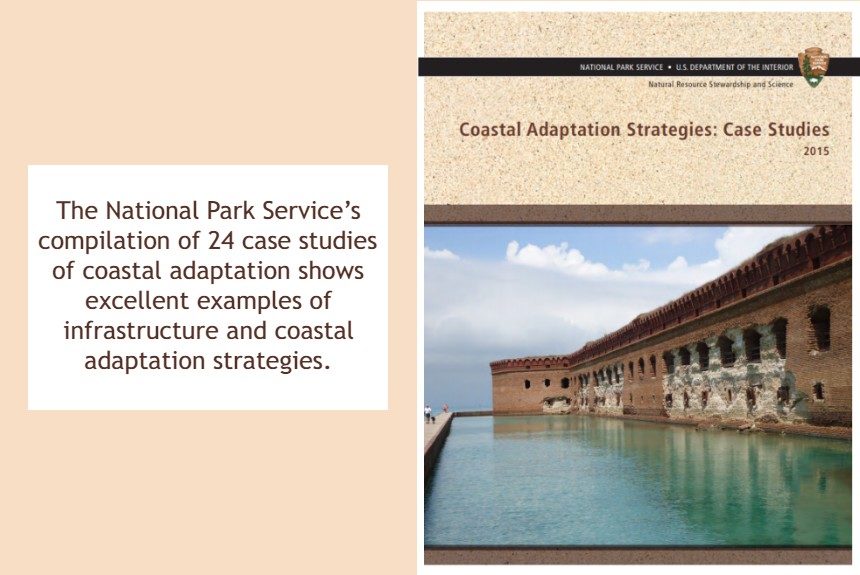The National Park Service’s compilation of 24 case studies of coastal adaptation shows excellent examples of infrastructure and coastal adaptation strategies.
Climate change impacts such as sea-level rise, shoreline erosion, ocean acidification, warming temperatures, groundwater inundation and changing precipitation patterns are affecting coastal parks in the US.
It has prompted their National Park Service managers and other coastal management authorities to respond and address climate change threats.
Climate adaptation strategies were shown in each case study, demonstrating these actions:
- incorporating climate change into policies and regulations,
- increasing/improving public awareness,
- managing expectations from the community,
- gathering additional data,
- making infrastructure resilient to climate change or
- managed retreat of built infrastructure when necessary.
In September 2015, the National Park Service compiled 24 coastal adaptation case studies in 15 states.
Examples of case studies in the report include:
- Relocation of Visitor Facilities threatened by Erosion
- Shell Mound Sites Threatened by Sea Level Rise and Erosion
- Reducing the Vulnerability of Coastal Visitor Facilities
- Restoring a National Recreation Wetlands
- Developing a Multi-agency vision for an urban coastline
- Large-Scale Restoration of Barrier Island Systems and Cultural Resource Protection through Sediment Placement, Gulf Islands National Seashore in Mississippi
- And many others.
To explore these fascinating climate adaptation case studies, click the link below:
Source:
Schupp, C.A., R.L. Beavers, and M.A. Caffrey [eds.]. 2015. Coastal Adaptation Strategies: Case Studies. NPS 999/129700. National Park Service, Fort Collins, Colorado.



Leave a Reply